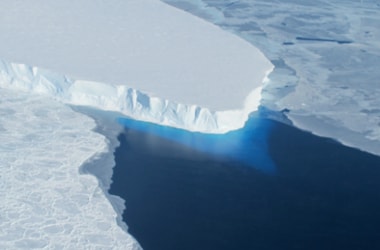
A glacier's risk of thinning can be predicted by analysing its shape.
Researchers at The University of Texas at Austin in the US identified glaciers in West Greenland that are most susceptible to thinning in the coming decades by analysing how they are shaped.
The Greenland Ice Sheet is the second-largest ice sheet on Earth and has been losing mass for decades, a trend scientists have linked to a warming climate.
However, the mass change experienced by individual coastal glaciers, which flow out from the ice sheet into the ocean, is highly variable.
This makes predicting the impact on future sea-level rise difficult.
The new study could help predict how much the Greenland Ice Sheet will contribute to future sea-level rise during the next century.
This is a number that currently ranges from inches to feet.
The analysis works by calculating how far inland thinning that starts at the terminus of each glacier is likely to extend.
Glaciers with thinning that reaches far inland are the most susceptible to ice mass loss.
How susceptible a glacier is to thinning depends on its thickness and surface slope, features that are influenced by the landscape under the glacier.
Thinning spreads more easily across thick and flat glaciers and is hindered by thin and steep portions of glaciers, researchers said.
These calculations will help improve estimates on how much Greenland can contribute to future sea- level rise. However, while the method can point out vulnerable areas, it can not predict how much mass loss is likely to occur.